So after you had their portrait painted, where were you going to worship your Chinese ancestors? At your very own altar table of course! Now truthfully, many of the larger pieces come from shrines and temples, but individuals did own them, and they were considered the most important piece of furniture in the home. Portraits and scrolls were hung above them on the wall and offerings such as food or flowers would be placed upon them, as well as decorative objects. During the Cultural Revolution, traditional Chinese furniture became a liability – a connection to the old ways – and much of it was destroyed or carted off, only to be rediscovered and deemed desirable by, you guessed it, westerners!
While we no longer use them for ritual worship, they tend to be incredibly functional and attractive in modern-day homes. The tables could be made of hard or soft woods, sometimes lacquered on top and often having upturned flanged ends. Bamboo pieces like this one tend to come from the Shanxi region of China. Long and narrow, set up higher than a dining table, altar tables fit well in a variety of spaces, perhaps nowhere better than an entryway, where they can hold display pieces, corral shoes and serve as an all around command center for the home. I love the items on display and the high contrast in this photo. All the accessories are linked back to the color black painted above the white beadboard. The fine bamboo table and the floor runner provide just the right amount of warmth.
Perfect along a long narrow hallway, this bamboo piece has a lacquered top. The mullioned window panes seem to mimic the shapes in the bamboo.
I would normally consider painting an antique bamboo altar table to be heresy, but this one looks so fresh against that great Florence Broadhurst peacock feather wallpaper.
I love the mix of the very sharp and spare lines of this simple table with the curvy Thonet stools below. Altar tables are perfect for stashing extra seating in the entry…
…as seen here again. Their height also makes them perfect for holding lamps.
Moving on to the redoubtable Miles Redd, I cannot help but admire the extraordinary combination of color, style and period in this dining room with the bamboo altar table providing the visual anchor amidst all that paleness. It also makes a great buffet, able to hold dishes, cutlery and numerous serving platters along its 7 foot or so length.
Tablescaping is an art that achieves perfection on an altar table, as the height and breadth give it stature while the space below is perfect for tucking just about anything. The contrast here between the symmetrical arrangement on top and the asymmetric one below is genius.
From a practical perspective, they make great bars! Note the blue and white porcelain hibachi, or maybe a fish bowl based on the painted motif, being used as an ice cooler…
…and here again, a lacquer one being put to the same use.
One of the best places for an altar table is running along the back of a sofa as a console table, perfect for holding lamps, books and magazines in easy reach. Unfortunately, I don’t have any photos illustrating that so you’ll have to use your imagination. I do have a few more unusual placements, like this example of a very wide one being used as a kitchen island…
…and this small narrow one being used in the bathroom as a dressing table.
Have you noticed a bias towards bamboo examples in this post? That is because bamboo altar tables from the Shanxi region of China are my favorites as evidenced by this late 18th century one in my home. One piece of advice I give often is to buy less, but buy better. This table was one of my main purchases when I lived in Hong Kong – I was very young so I scraped and saved to buy it. There has never been a moment since in which I did not love it and I know I will have it forever. When I came to Japan 7 years ago I assessed every house and apartment I saw for placement of the table as it is over 7 feet in length and didn’t fit in my NYC apartment. Now it has the pride of place and you see it immediately upon entering.
I hope you are enjoying these Chinese New Year week posts!
Image credits: 1.via Eclectic Revisited, 2. via decorpad, 3. Domino September 2006, photo credit: Corey Walter, 4. Elle Decor March 2006, photo credit: Pieter Estersohn, 5. House Beautiful September 2007, photo credit: Pieter Estersohn, 6. House Beautiful April 2011, photo credit: James Merrell, 7. House Beautiful September 2007, 8. House Beautiful November 2009, 9. Markham Roberts, credit unknown, 10. House Beautiful May 2010, photo credit: Thomas Loof, 11. Elle Decor June 2010, photo credit: Simon Upton, 12. me.


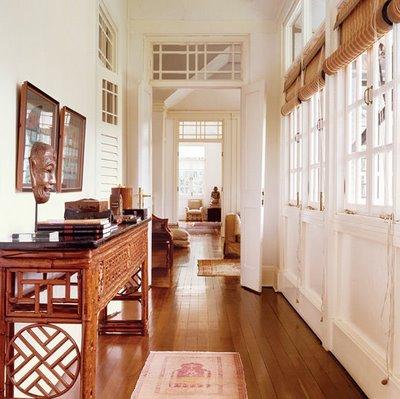


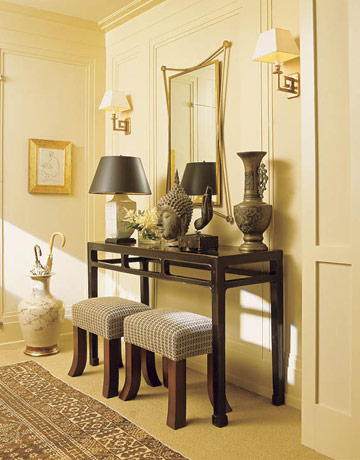
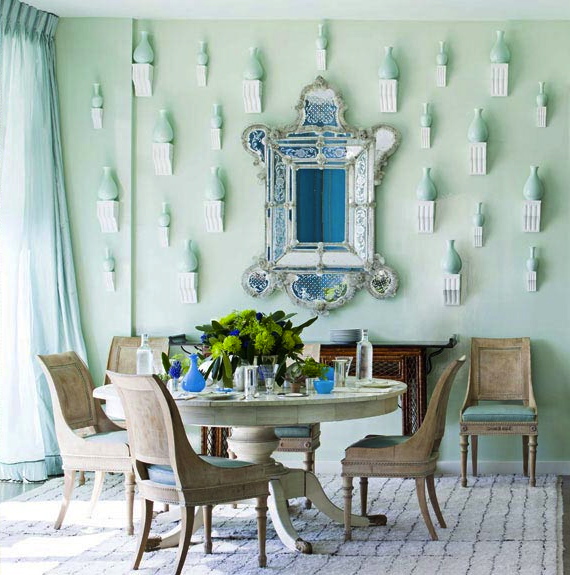
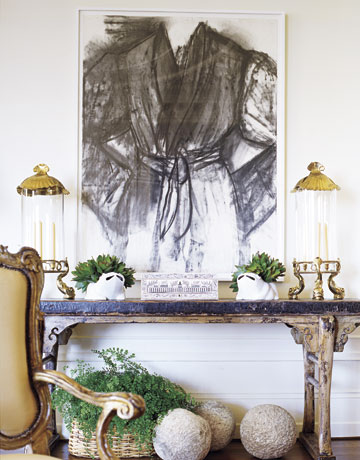
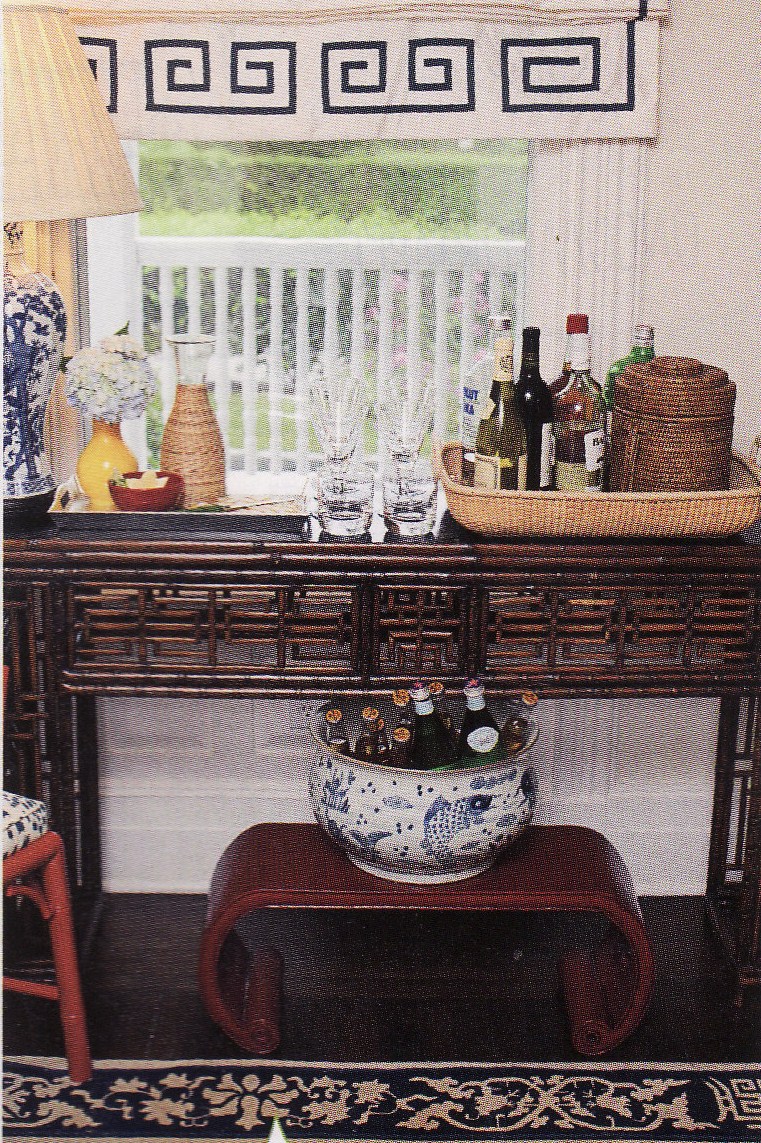

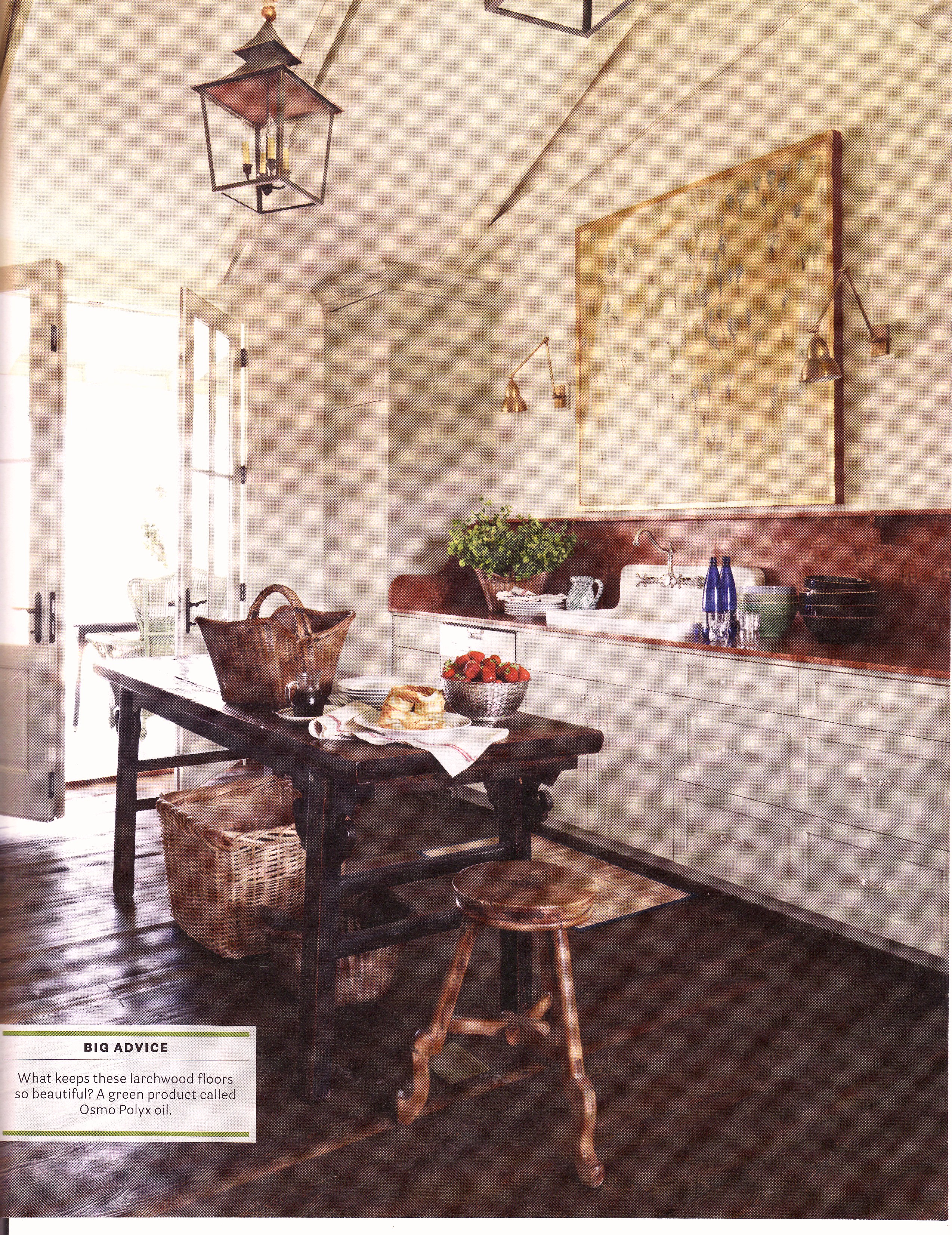
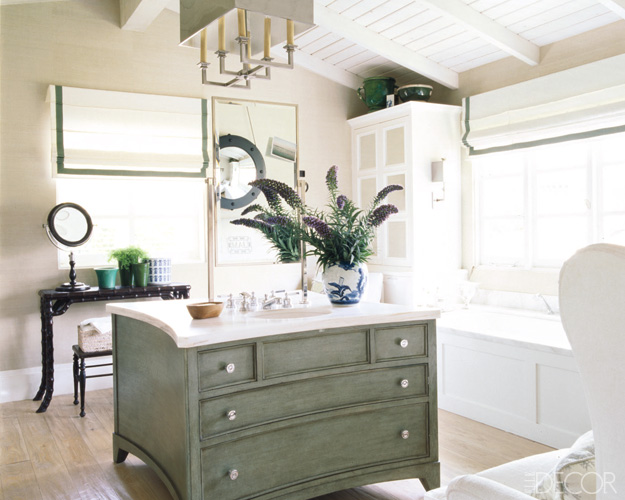
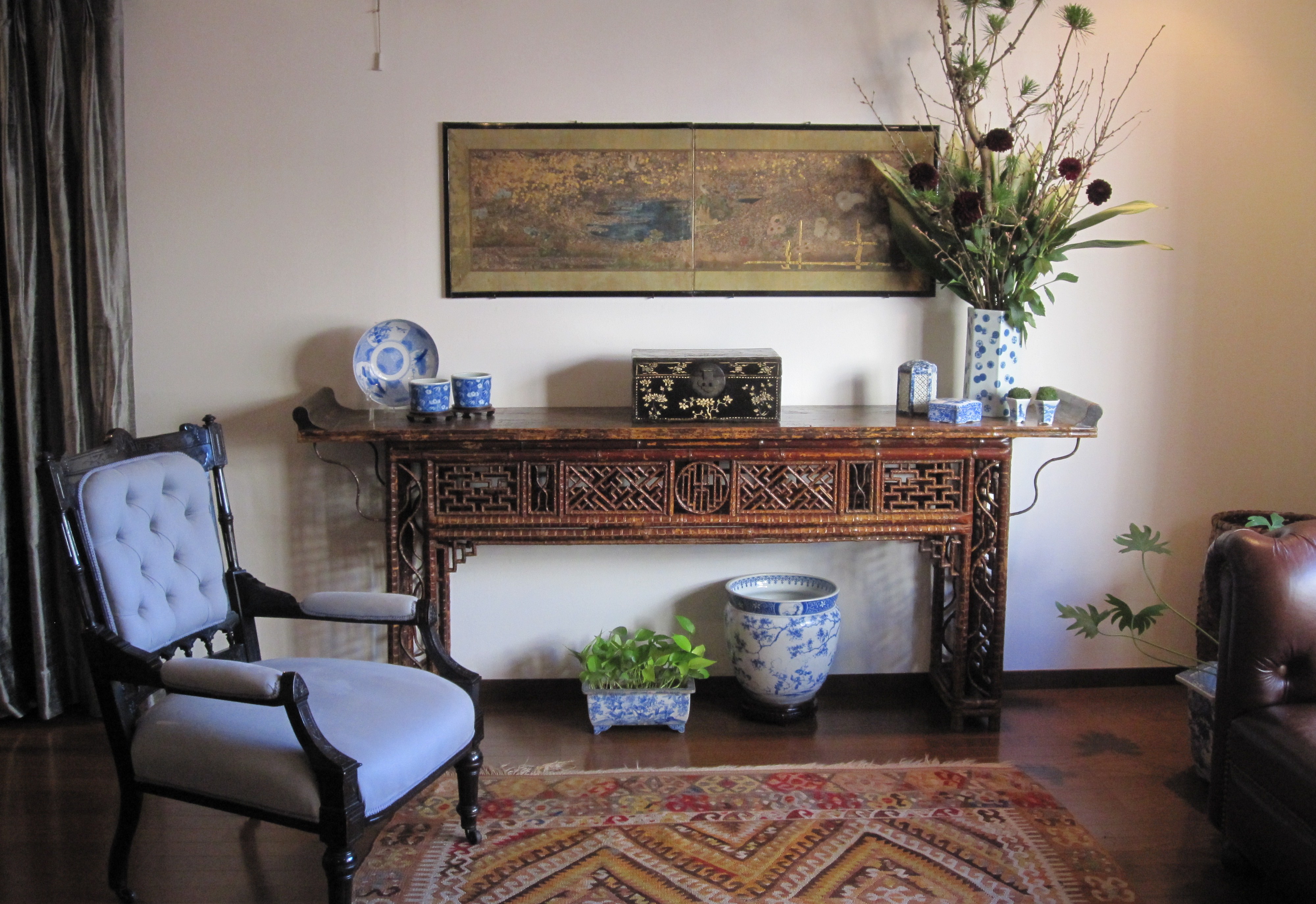
I’m loving these Chinese posts! Sharing them with a friend who lived in China for 10+ years and we are both inspired. Now I must find a small alter table for my modern/asian/cottage style condo. Thanks, Barbara H
Hopefully that won’t be too hard! Thanks for sharing Barbara!
________________________________
I love the altar table used as a bar…of course the blue and white lamp and hibachi or “fish bowl” adds to the allure for me. I’m searching for one to be used behind my sofa as you mention, and then eventually in a space in my long hallway in the Tahoe house. Happy CNY – Year of the Dragon! Your insight, knowledge, and library of photos never cease to amaze me.
Thanks so much!
________________________________
My altar table has certainly served as a workhorse in the past four years, from behind the sofa, next to the kitchen table and currently serving as the buffet in our dining room. My mother has used her in various ways as well. I was waiting for the last photo the whole post though!!! I’ve always loved yours.
Thank you!!!
________________________________
I particularly love this post. It has many of my design “flavors” and some even reside in my own home. Love your blog by the way, and love to read it too.
Thanks so much!!
________________________________
This takes me back. It was my one big regret to not have found just the right altar table in all those years of living in Hong Kong.
Where would you put it?
________________________________